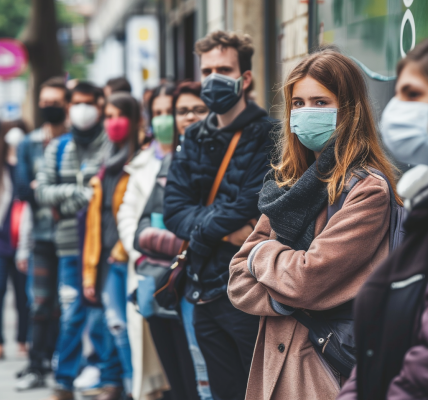As the fall season ushers in cooler temperatures, parents are reminded of the heightened risk of respiratory syncytial virus (RSV) among children. This highly contagious virus is a leading cause of hospitalization for infants and young children in the United States, with the Centers for Disease Control and Prevention (CDC) reporting that between 58,000 and 80,000 children under the age of five are hospitalized each year due to RSV.
RSV primarily affects the nose, throat, and lungs, and its symptoms can mimic those of the flu and COVID-19, making it challenging for parents to identify in the early stages. Common symptoms include congestion, dry cough, low-grade fever, sore throat, sneezing, and headache. While many children experience mild symptoms similar to a common cold, RSV can escalate into more severe complications, such as trouble breathing, which may necessitate hospitalization.
Statistics reveal that two out of three babies will contract RSV by their first birthday. Infants born prematurely, those under six months of age, and those with existing health issues are particularly vulnerable to severe complications from this virus. Dr. Ivelisse Santiago, a pediatric hospitalist at South Texas Health System Children’s, explains that advanced RSV can obstruct airflow to the lungs, resulting in dangerously low oxygen levels in the bloodstream. In some instances, the virus can progress to more critical conditions such as bronchiolitis and pneumonia.
In the United States, RSV is responsible for an estimated 100 to 300 child fatalities annually, according to the National Foundation for Infectious Disease. Given the potential severity of RSV, South Texas Health System Children’s is urging parents and caregivers to adopt preventative measures to safeguard their children’s health this season.
Effective Strategies to Reduce RSV Risk
To help mitigate the spread of RSV, here are several essential tips for parents and caregivers:
1. Teach Proper Handwashing
Handwashing is one of the most effective ways to prevent the transmission of respiratory illnesses. The CDC indicates that proper hand hygiene can protect one in five young children from respiratory infections. Parents should encourage frequent handwashing, especially after being in public places, before meals, and after using the restroom.
2. Avoid Close Contact with Sick Individuals
Keeping children away from individuals who are showing symptoms of illness can significantly reduce their risk of contracting RSV. This includes avoiding crowded places where the virus can spread more easily.
3. Practice Good Respiratory Hygiene
Encouraging children to cover their mouths and noses with a tissue or their elbow when they cough or sneeze can help prevent the spread of germs. Dispose of tissues properly and wash hands immediately afterward.
4. Keep Surfaces Clean
Regularly disinfecting frequently-touched surfaces, such as doorknobs, light switches, and toys, can help eliminate germs that cause RSV. Using appropriate cleaning agents can reduce the likelihood of the virus spreading in your home.
5. Limit Exposure During Peak Season
During the RSV season, which typically peaks in the fall and winter months, it is advisable to limit children’s exposure to large gatherings where they may come into contact with sick individuals. Opt for smaller gatherings and outdoor activities when possible.
6. Ensure Vaccinations are Up to Date
Keeping up with routine vaccinations is crucial for children’s health. Consult with your pediatrician to ensure that your child is up to date on their immunizations, which can protect against other respiratory illnesses.
7. Monitor Symptoms Closely
Parents should be vigilant in monitoring their children’s health, especially during RSV season. If a child exhibits symptoms such as difficulty breathing, wheezing, or a high fever, seek medical attention promptly.
8. Promote a Healthy Lifestyle
Encouraging a healthy diet, regular physical activity, and adequate sleep can strengthen children’s immune systems, making them less susceptible to infections like RSV.
As RSV continues to pose a significant health risk to young children, parents and caregivers play a crucial role in implementing these preventive strategies. By staying informed and proactive, families can work together to protect their children from the dangers of respiratory syncytial virus this season.





